Input interpretation

3, 5-bis(trifluoromethyl)benzenamine
Chemical names and formulas
![formula | (CF_3)_2C_6H_3NH_2 Hill formula | C_8H_5F_6N name | 3, 5-bis(trifluoromethyl)benzenamine IUPAC name | 3, 5-bis(trifluoromethyl)aniline alternate names | 3, 5-bis(trifluoromethyl)aniline | [3, 5-bis(trifluoromethyl)phenyl]amine | 3, 5-di(trifluoromethyl)aniline | 5-amino-α, α, α, α', α', α'-hexafluoro-m-xylene | , 5-bis-trifluoromethyl-phenylamine | a, a, a, a', a', a'-hexafluoro-3, 5-xylidine | aniline, 3, 5-bis(trifluoromethyl)- | α, α, α, α', α', α'-hexafluoro-3, 5-xylidine mass fractions | C (carbon) 41.9% | F (fluorine) 49.8% | H (hydrogen) 2.2% | N (nitrogen) 6.11%](../image_source/9e442f8aab0a2203b3269f23cec66fe5.png)
formula | (CF_3)_2C_6H_3NH_2 Hill formula | C_8H_5F_6N name | 3, 5-bis(trifluoromethyl)benzenamine IUPAC name | 3, 5-bis(trifluoromethyl)aniline alternate names | 3, 5-bis(trifluoromethyl)aniline | [3, 5-bis(trifluoromethyl)phenyl]amine | 3, 5-di(trifluoromethyl)aniline | 5-amino-α, α, α, α', α', α'-hexafluoro-m-xylene | , 5-bis-trifluoromethyl-phenylamine | a, a, a, a', a', a'-hexafluoro-3, 5-xylidine | aniline, 3, 5-bis(trifluoromethyl)- | α, α, α, α', α', α'-hexafluoro-3, 5-xylidine mass fractions | C (carbon) 41.9% | F (fluorine) 49.8% | H (hydrogen) 2.2% | N (nitrogen) 6.11%
Lewis structure
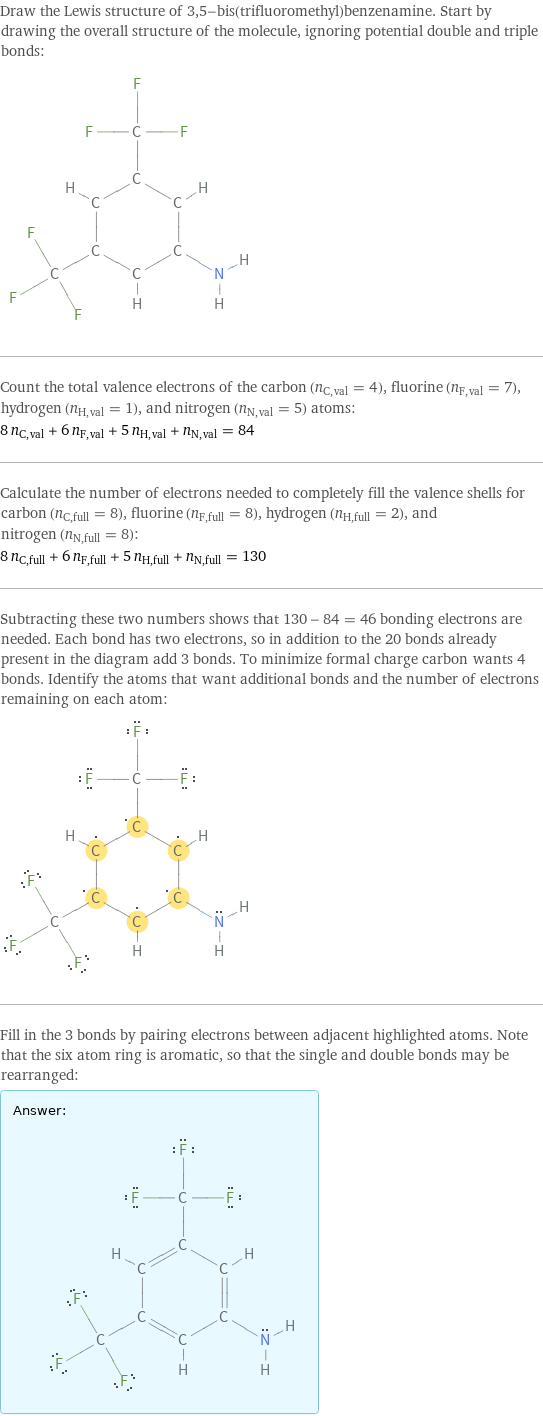
Draw the Lewis structure of 3, 5-bis(trifluoromethyl)benzenamine. Start by drawing the overall structure of the molecule, ignoring potential double and triple bonds: Count the total valence electrons of the carbon (n_C, val = 4), fluorine (n_F, val = 7), hydrogen (n_H, val = 1), and nitrogen (n_N, val = 5) atoms: 8 n_C, val + 6 n_F, val + 5 n_H, val + n_N, val = 84 Calculate the number of electrons needed to completely fill the valence shells for carbon (n_C, full = 8), fluorine (n_F, full = 8), hydrogen (n_H, full = 2), and nitrogen (n_N, full = 8): 8 n_C, full + 6 n_F, full + 5 n_H, full + n_N, full = 130 Subtracting these two numbers shows that 130 - 84 = 46 bonding electrons are needed. Each bond has two electrons, so in addition to the 20 bonds already present in the diagram add 3 bonds. To minimize formal charge carbon wants 4 bonds. Identify the atoms that want additional bonds and the number of electrons remaining on each atom: Fill in the 3 bonds by pairing electrons between adjacent highlighted atoms. Note that the six atom ring is aromatic, so that the single and double bonds may be rearranged: Answer: | |
3D structure
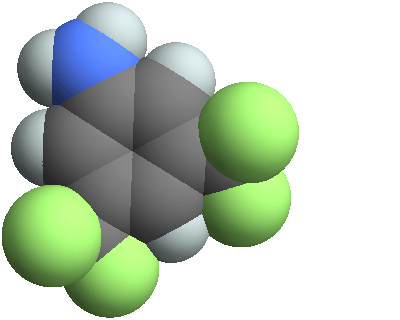
3D structure
Basic properties
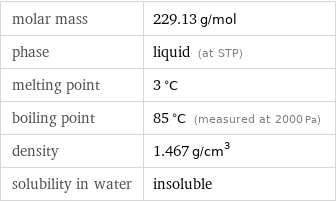
molar mass | 229.13 g/mol phase | liquid (at STP) melting point | 3 °C boiling point | 85 °C (measured at 2000 Pa) density | 1.467 g/cm^3 solubility in water | insoluble
Units

Liquid properties (at STP)
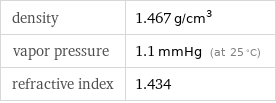
density | 1.467 g/cm^3 vapor pressure | 1.1 mmHg (at 25 °C) refractive index | 1.434
Units

Thermodynamic properties

molar heat of vaporization | 41.2 kJ/mol specific heat of vaporization | 0.18 kJ/g (at STP)
Chemical identifiers
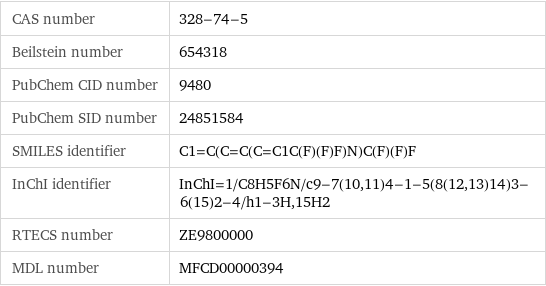
CAS number | 328-74-5 Beilstein number | 654318 PubChem CID number | 9480 PubChem SID number | 24851584 SMILES identifier | C1=C(C=C(C=C1C(F)(F)F)N)C(F)(F)F InChI identifier | InChI=1/C8H5F6N/c9-7(10, 11)4-1-5(8(12, 13)14)3-6(15)2-4/h1-3H, 15H2 RTECS number | ZE9800000 MDL number | MFCD00000394
NFPA label

NFPA label
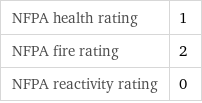
NFPA health rating | 1 NFPA fire rating | 2 NFPA reactivity rating | 0
Safety properties

flash point | 83.33 °C

DOT hazard class | 6.1 DOT numbers | 2810
Toxicity properties

RTECS classes | other